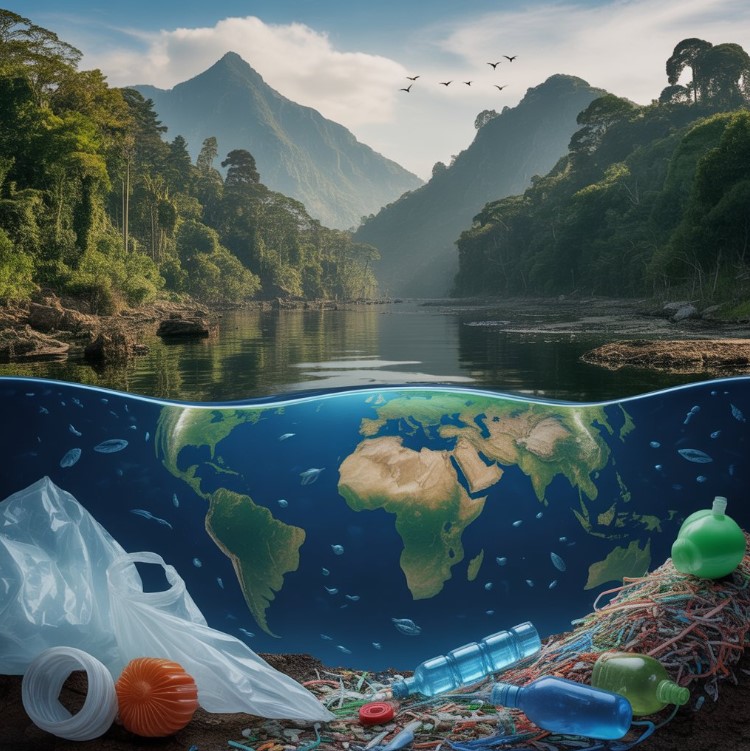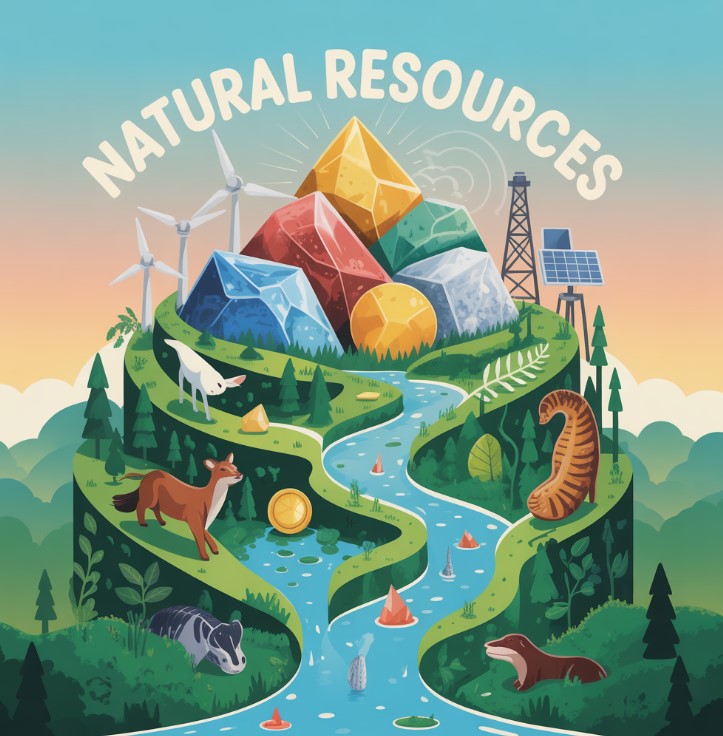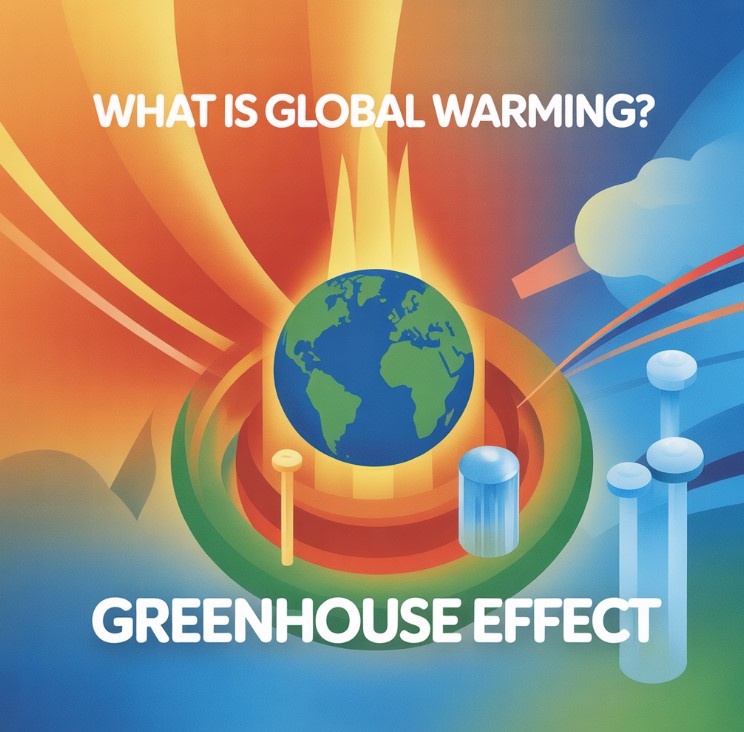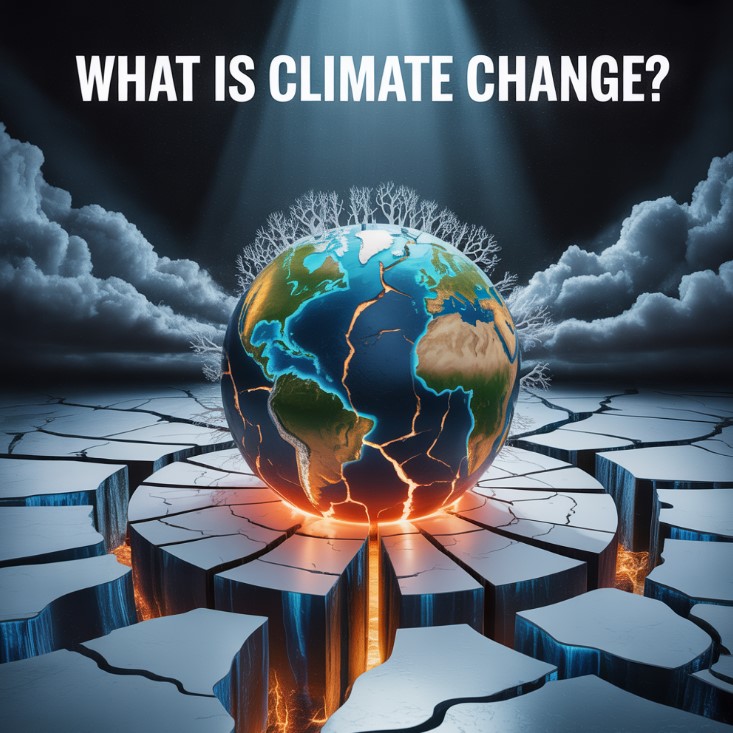Contents
Environmental degradation is the damage and destruction of the natural world through the depletion of natural resources, environmental pollution, and biodiversity loss, a process driven almost entirely by human activities.
What is Environmental Deterioration?
Environmental deterioration means the weakening and breakdown of the environment’s health. This process harms the planet’s ability to support life by upsetting natural balances and reducing access to essentials like clean air, fresh water, and healthy soil. According to the United Nations (UN), fighting environmental degradation is a major global challenge because its effects are a direct threat to human well-being and our economies.
Indicators of Environmental Degradation
Clear signs show that environmental degradation is happening on a massive scale. These key indicators highlight the size of the problem:
- Deforestation: Around 10 million hectares of forest are cut down every year. This leads to land degradation and is a primary form of habitat destruction.
- Plastic Pollution: Over 400 million tonnes of plastic are made annually. Much of this ends up in our oceans, harming sea life. The effects of plastic bags on the ocean are especially damaging as they kill animals and break down into tiny toxic particles.
- Climate Change: The Earth’s average temperature has risen by about 1.1°C because of pollution from human activities. This is causing more extreme weather, such as intense storms and heatwaves.
- Melting Ice: The ice caps in the Arctic and Antarctica are melting at an alarming rate. This causes sea levels to rise, threatening coastal communities around the world.
- Biodiversity Loss: An enormous number of animal and plant species are going extinct. This is an ecological tragedy that weakens nature and makes ecosystems less stable.
Characteristics of Environmental Deterioration
The process of environmental deterioration has several clear features:
- Caused by Humans: The great majority of today’s environmental degradation is the result of human actions, such as industry, farming, and the growth of cities.
- A Slow Buildup: The damage is often the result of many small, harmful actions adding up over a long time to create huge problems like climate change.
- Using Up Resources: It involves using up the depletion of natural resources—like oil, water, and minerals—faster than the Earth can replace them.
- A Domino Effect: Damage to one part of nature often causes problems in others. For example, habitat destruction in one area can affect animals and plants far away.
Causes of Environmental Degradation
The causes of environmental degradation are interconnected. They can be understood with the simple idea of the I = PAT environmental impact formula, where Impact = Population x Affluence (consumption) x Technology.
1. Population Growth
How does population growth cause environmental degradation? A growing population requires more food, water, housing, and energy. This increased demand leads to more farming, more cities, and a faster depletion of natural resources, which creates more environmental pollution and habitat destruction.
2. Overconsumption and Waste
High levels of consumption, especially in wealthy countries, drive the constant extraction of resources and produce huge amounts of waste. This focus on economic growth over environmental health is a primary cause of environmental degradation.
3. Industrial Technology and Pollution
Many of our technologies, especially those that burn fossil fuels like coal and oil for energy, are major sources of environmental pollution. This air pollution releases gases that trap heat in the atmosphere, causing climate change. Industrial farming also leads to land degradation by using harmful chemicals.
4. Deforestation and Land Clearing
Cutting down forests to make space for farms, cities, or to sell lumber is a major cause of land degradation and biodiversity loss. Forests are crucial for absorbing the pollution that causes climate change, so losing them makes the problem worse.
Table: Major Types of Environmental Pollution and Their Sources
| Type of Pollution | Primary Sources | Key Impacts |
|---|---|---|
| Air Pollution | Burning fossil fuels, factory emissions, car exhaust | Breathing problems, acid rain, global warming |
| Water Pollution | Factory waste, chemicals from farms, plastic trash | Unsafe drinking water, death of fish and sea life |
| Land Degradation | Cutting down forests, intensive farming, mining | Soil loss, loss of farmland, creation of deserts |
| Noise Pollution | Heavy traffic, construction sites, industrial machines | Human stress, harm to wildlife hearing and behavior |
Consequences of Environmental Degradation
The results of environmental deterioration are serious, affecting both nature and human society.
Ecological Consequences
- Habitat Destruction: When forests, wetlands, and other natural areas are destroyed, animals and plants lose their homes, pushing many toward extinction.
- Biodiversity Loss: The loss of different species weakens entire ecosystems, making them less able to handle challenges like disease or drought. This reduces nature’s ability to provide services we rely on, like clean water and pollination for crops.
- Climate Change: The buildup of pollution in the atmosphere is making the planet hotter. This leads to more dangerous weather, rising sea levels, and widespread disruption to life on Earth.
Consequences of Environmental Degradation for Humans
The consequences of environmental degradation for humans are severe. This is not just a problem for nature; it is a direct threat to our health, safety, and future.
- Scarcity and Conflict: As the depletion of natural resources like fresh water and good farmland continues, competition for them can increase, leading to social unrest and even wars.
- Health Problems: Air pollution causes millions of deaths each year from diseases like asthma and heart disease. The relationship between environmental degradation and new diseases is also a major concern; as we destroy habitats, we come into closer contact with wildlife, increasing the risk of germs jumping from animals to humans.
- Economic Costs: Damage to nature harms industries like farming, fishing, and tourism. The cost of cleaning up after natural disasters made worse by environmental degradation is a huge financial strain on countries and communities.
- Displacement of People: Rising sea levels and the spread of deserts are making some places unlivable, forcing millions of people to leave their homes as refugees.
Frequently Asked Questions (FAQ)
What are the effects of plastic bags on the ocean?
The effects of plastic bags on the ocean are terrible. Marine animals like turtles and whales mistake them for food, which can choke them or cause them to starve. Over time, plastic bags break down into tiny toxic pieces that contaminate seafood and the entire ocean environment.
What is the relationship between environmental degradation and new diseases?
The relationship between environmental degradation and new diseases is direct. When we destroy forests and other natural habitats, we force wild animals into closer contact with humans. This creates more opportunities for new viruses and bacteria to spread from animals to people, potentially causing epidemics.
How can environmental degradation be stopped or reversed?
Stopping environmental degradation requires a major global effort. Key steps include switching from fossil fuels to clean energy like solar and wind, practicing farming methods that protect the soil, reducing waste through recycling and reuse, protecting natural areas, and creating strong laws to limit environmental pollution.





